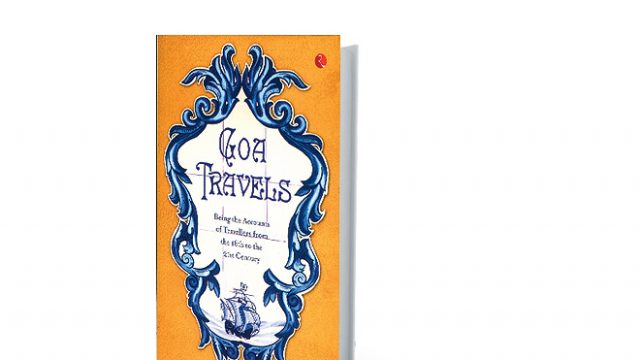Personal accounts of travels in times past fascinate the inner voyeur in us. When these travellers’ tales relate to Goa — the land that has attracted generations of travellers through the ages — the fascination becomes absolutely riveting. And riveting is exactly what Manohar Shetty’s latest offering is. Goa Travels: Being the Account of Travellers from the 16th to the 21st Century delves deep into Eldorado, or ‘Goa Dourada’ (Golden Goa), and comes out on the other end of the spectrum where Goa has lost most of her sheen, where the state has become synonymous with sex and sleaze.
The book is not a brochure for Goa, no. Sure there are mentions of ‘many faire churches’ and ‘exquisitely flavoured birds’, but this is in no way another in the long line of promotional materials about the state. For one, none of the early travellers mentions Goa’s beaches ‘even in passing’, as Shetty notes, and yet, they present a picture of Goa that is colourful, at the very least.
The first part of the book is called ‘The Early Traveller’, featuring reports from the first people to arrive on Goa’s golden shores. As pioneers, they chronicled the society, economic activities, sartorial customs and the cuisine of the region. Among them was Duarte Barbosa, the brother-in-law of the legendary Ferdinand Magellan, who mentions the great trade circle of Goa, but moves on to the more horrific account of ‘sati’ in Vijaynagar. Then there is the account of Fernao Mendes Pinto, who accompanied the body of St. Francis Xavier to Goa, and talks about the spectacle that it caused on arrival. The next account is by Anthony Monserrate, a Jesuit whose interactions with Emperor Akbar (referred to as Zelaldinus) about the Bible and Christ brought out the differences in the Islamic scripture and the Bible, but as was apparent, was not able to woo the emperor to the Catholic faith. A fourth account is by John Huyghen Van Linschoten, whose tales of Goan Mesticos, weddings, courtesies and ‘customes and manners’ make for a very engaging read.
After a few more such early accounts, each one more insightful than the other, the book moves on to its lone account of the Inquisition—that dreaded, and very dark period of Portuguese Goa. While it would be nice to have a few more accounts of this period, this chapter is a hair-raising eye-witness chronicle of the ‘bloodcurdling zeal of Portuguese bigotry at the time’, as Shetty puts it.
The third part, titled ‘The Contemporary Traveller’, is an honest, if depressing, tale of Goa’s incipient decline. The “heavy sickly fumes” of feni, defecating squatters and sexcapades on the beach loom heavy in this section. Yet, it ties up neatly with the earlier narratives. As Katharina Kakar writes, Goa still is “a place of deep social conservatism, of folk religiosity in its village temples and churches, of simplicity of lifestyle.” This shows how much of Goa remains just as it was in the tales of the earliest visitors.
Skip reading this one if you are looking to extract more thrill out of Goa’s hippie vibe, but Goa Travels is an exquisite collection of travelogues about the state we have all come to love.




